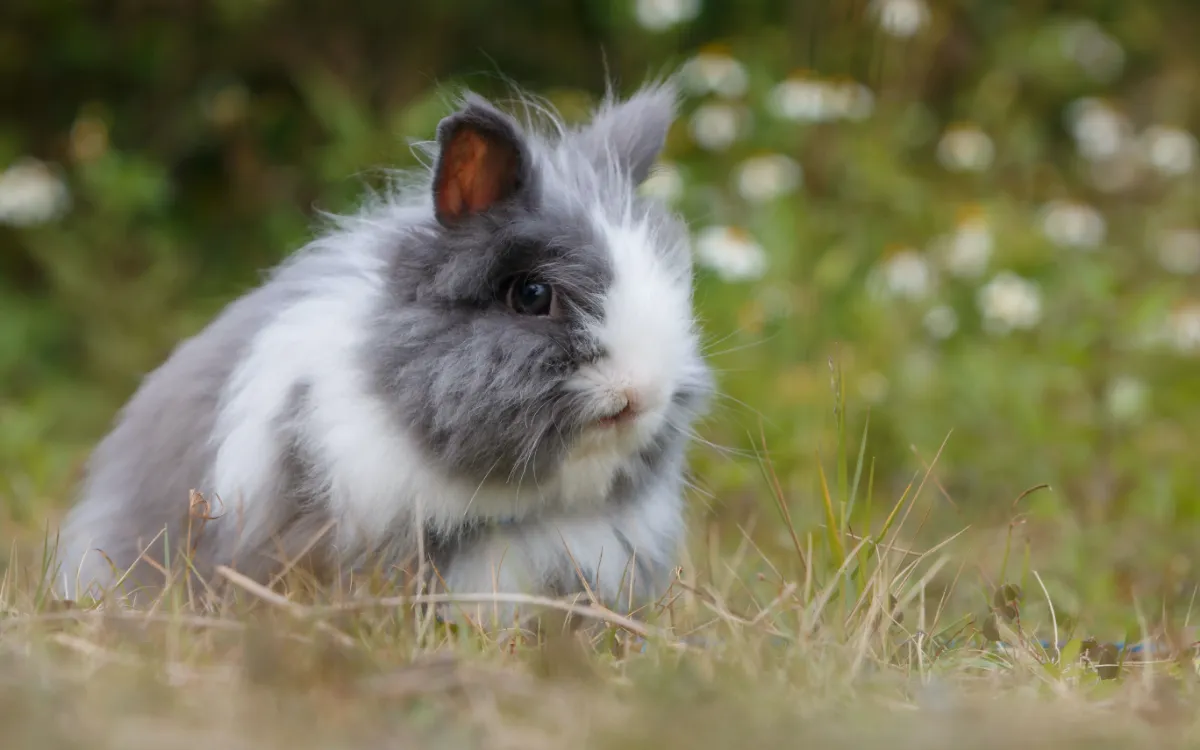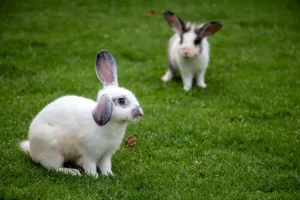Imagine the crisp air on a chilly day, with temperatures hovering around 50 degrees. As a responsible pet owner, you may wonder, is this too cold for your beloved rabbit?
In this article, we will explore the natural temperature range of rabbits, the importance of proper shelter, and tips for keeping them warm in cooler weather.
Stay informed and ensure the well-being of your furry friend in cold temperatures.
In This Article
- 1 Key Takeaways
- 2 Understanding a Rabbit’s Natural Temperature Range
- 3 The Importance of Proper Shelter for Rabbits in Cold Weather
- 4 Signs and Symptoms of Cold Stress in Rabbits
- 5 Tips for Keeping Rabbits Warm in 50 Degree Weather
- 6 Common Mistakes to Avoid When Keeping Rabbits in Cold Temperatures
- 7 Other Factors to Consider: Humidity, Wind, and Rabbit Breed
- 8 When to Seek Veterinary Care for a Rabbit in Cold Weather
- 9 Frequently Asked Questions
- 9.1 Can Rabbits Survive in Temperatures Below 50 Degrees?
- 9.2 How Can I Tell if My Rabbit Is Experiencing Cold Stress?
- 9.3 Are There Any Specific Rabbit Breeds That Are More Tolerant of Cold Temperatures?
- 9.4 What Are Some Common Mistakes to Avoid When Trying to Keep Rabbits Warm in Cold Weather?
- 9.5 At What Point Should I Seek Veterinary Care for My Rabbit in Cold Weather?
- 10 Conclusion
Key Takeaways
- Rabbits can regulate their body temperature within a certain range and develop a thicker coat during winter to retain heat.
- Proper shelter and insulation are important to protect rabbits from low temperatures and potential hypothermia.
- Regular monitoring of rabbits for signs of cold stress, such as shivering, lethargy, and reduced appetite, is crucial.
- In 50-degree weather, providing a well-insulated outdoor hutch, extra bedding, a warm indoor space, and considering additional heat sources can help keep rabbits warm.
Understanding a Rabbit’s Natural Temperature Range
Do you know if your rabbit can regulate its body temperature within a certain range?
Rabbits have a remarkable ability to naturally regulate their body temperature. They’re able to adapt to different weather conditions, including extreme cold. During winter, rabbits develop a thicker coat to keep themselves warm. This winter coat adaptation helps them retain heat and stay comfortable even in chilly temperatures.
Additionally, rabbits have the ability to adjust their metabolism and conserve energy during colder months. They may also seek shelter in burrows or other protected areas to further regulate their body temperature.
It’s important to provide your rabbit with a suitable environment that allows for natural temperature regulation, ensuring their well-being and comfort throughout the year.
The Importance of Proper Shelter for Rabbits in Cold Weather
Make sure you provide your rabbit with a warm and insulated shelter to protect them from the cold weather. Rabbits are sensitive to low temperatures and can suffer from hypothermia if not properly protected.
Here are some key points to consider when setting up a shelter for your furry friend:
- Insulated housing: Use materials that provide good insulation, such as wood or plastic, to keep the shelter warm. Avoid metal, as it can become too cold for your rabbit.
- Bedding options: Provide a thick layer of bedding to help your rabbit stay warm. Options like straw or hay are excellent choices as they provide insulation and a cozy environment.
- Proper ventilation: Ensure that the shelter has proper ventilation to prevent condensation and maintain a healthy environment for your rabbit.
- Additional heat sources: Consider using heat pads or thermal blankets to provide extra warmth during particularly cold nights.
Signs and Symptoms of Cold Stress in Rabbits
You should regularly monitor your rabbit for signs and symptoms of cold stress, as they can occur even in rabbits with proper shelter and insulation.
Cold stress prevention is crucial for ensuring the well-being of your furry friend during colder months.
Rabbits are sensitive to extreme temperatures and can experience cold stress, which can lead to serious health issues if not addressed promptly.
Signs of cold stress in rabbits may include shivering, huddling, lethargy, reduced appetite, and cold ears or feet.
If you notice any of these symptoms, it’s important to take immediate action to warm your rabbit.
Provide extra bedding, keep their living area draft-free, and consider using heat lamps or blankets designed for pets.
Tips for Keeping Rabbits Warm in 50 Degree Weather
Keeping your rabbit warm in 50-degree weather is important to prevent cold stress and maintain their health and well-being. Whether your rabbit is kept outdoors or indoors, here are some tips to create a warm and cozy environment for them:
- Outdoor shelters: Provide a well-insulated hutch with a solid roof to protect your rabbit from wind and rain. Add extra bedding to keep them warm.
- Indoor options: If you choose to keep your rabbit indoors, ensure they have a dedicated space with plenty of warm bedding and a cozy hiding spot.
- Warmth sources: Consider using a heat lamp or a heated pad designed for small animals. Place it in a safe location away from your rabbit’s reach.
- Monitor temperature: Use a thermometer to regularly check the temperature in your rabbit’s environment. Adjust heating sources as needed to maintain a comfortable temperature.
Common Mistakes to Avoid When Keeping Rabbits in Cold Temperatures
One common mistake to avoid when caring for rabbits in cold temperatures isn’t providing enough insulation in their outdoor shelters. Rabbits are sensitive to extreme temperatures and can suffer from hypothermia if not properly protected. To ensure your rabbits stay warm, it’s essential to provide them with well-insulated shelters.
This can be achieved by using materials such as straw or hay to line the shelter, creating a cozy and warm environment. Additionally, it’s important to dress appropriately when caring for rabbits in cold temperatures. Wearing proper clothing, such as insulated jackets and gloves, won’t only keep you warm but also allow you to provide better care for your rabbits.
Furthermore, considering heating options, such as heat lamps or heated pads, can provide additional warmth for your rabbits during extremely cold weather. By avoiding these common mistakes and taking proper precautions, you can ensure the well-being of your rabbits in cold temperatures.
Other Factors to Consider: Humidity, Wind, and Rabbit Breed
Don’t forget to take into account the effects of humidity, wind, and your rabbit’s breed when considering their well-being in cold temperatures. These factors can greatly impact your rabbit’s comfort and health.
Here are some key things to keep in mind:
- Humidity effects: High humidity can make cold temperatures feel even colder to your rabbit. Moisture in the air can cause the rabbit’s fur to become damp, reducing its insulation properties and making it more susceptible to frostbite.
- Wind chill factors: Wind can significantly increase the rate of heat loss from your rabbit’s body, making it feel much colder than the actual temperature. Windy conditions can also make it challenging for your rabbit to find shelter and stay warm.
- Rabbit breed: Different rabbit breeds have varying levels of cold tolerance. Some breeds, such as the Siberian or Alaska, have thick fur and are better equipped to handle colder temperatures, while others, like the Rex or Angora, may require extra protection from the cold.
- Providing adequate shelter: Ensure that your rabbit has a well-insulated hutch or enclosure that offers protection from wind and rain. Adding extra bedding and covering the hutch with a waterproof tarp can further enhance its warmth and comfort.
When to Seek Veterinary Care for a Rabbit in Cold Weather
If your rabbit is exhibiting signs of hypothermia or frostbite, it’s important to seek veterinary care immediately in cold weather. Cold stress can have serious consequences for rabbits, as they’re susceptible to temperature extremes.
Signs of hypothermia include shivering, lethargy, and a decrease in body temperature. Frostbite can cause discoloration, swelling, and pain in the affected areas.
It’s crucial to act quickly and seek veterinary care to prevent further complications. A veterinarian can provide the necessary treatment for hypothermia or frostbite, such as warming methods, pain relief, and antibiotics if necessary. Additionally, they can offer guidance on how to prevent cold stress in the future, including proper housing, insulation, and bedding.
Frequently Asked Questions
Can Rabbits Survive in Temperatures Below 50 Degrees?
Rabbits can survive in temperatures below 50 degrees, thanks to their fur insulation. To properly prepare a rabbit hutch for cold weather, provide extra bedding, cover the hutch with a tarp, and ensure proper ventilation.
How Can I Tell if My Rabbit Is Experiencing Cold Stress?
To determine if your rabbit is experiencing cold stress, look for signs such as shivering, huddling, or decreased activity. Properly insulating the hutch with blankets or straw can help keep your rabbit warm in colder temperatures.
Are There Any Specific Rabbit Breeds That Are More Tolerant of Cold Temperatures?
Are there specific rabbit breeds that handle chilly temps better? Absolutely! Some breeds, like the Alaska and Siberian, are built for the cold. To create a warm haven for your furry friend in winter, insulation and cozy bedding are key.
What Are Some Common Mistakes to Avoid When Trying to Keep Rabbits Warm in Cold Weather?
Common mistakes when keeping rabbits warm in cold weather include using improper bedding and not providing enough insulation. Make sure to use appropriate materials like straw or hay and ensure the enclosure is well-insulated.
At What Point Should I Seek Veterinary Care for My Rabbit in Cold Weather?
If your rabbit is showing signs of distress or illness in cold weather, it is important to seek veterinary care urgently. Best practices for keeping rabbits warm include providing adequate bedding, insulation, and a draft-free environment.
Conclusion
In conclusion, while 50 degrees may seem cold to us, it’s within a rabbit’s natural temperature range. However, it’s still important to provide proper shelter and warmth for your rabbit in colder weather.
Understanding the signs of cold stress and implementing tips to keep your rabbit warm can help ensure their well-being. Remember to consider factors such as humidity, wind, and your rabbit’s breed when determining their comfort level.
If you notice any concerning symptoms, seek veterinary care for your rabbit.





